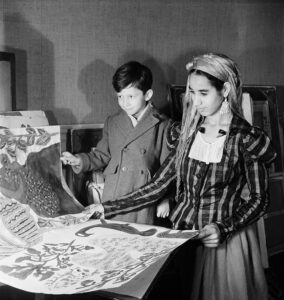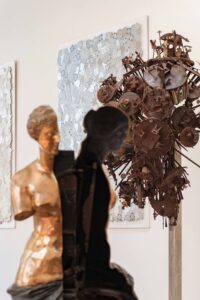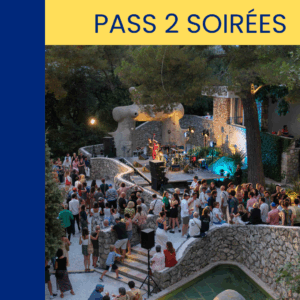
Invisible object (Hands Holding the Void), 1934
This sculpture, also entitled Hands Holding the Void, represents a seated female figure, or who is toppling, unsteadily balanced on a latticed rectangular support, with an effect of false perspective tending to make the chair on which she is resting more vertical. Whereas the body is connected to the frame in the upper part, in the lower part it is only prevented from falling – like an interrupted dynamic – by a mysterious board which supports the tibia. André Breton renamed it « The Invisible Object », thus evoking the « obscure object of desire », dear to surrealists keen on psychoanalysis.
During a visit to the Saint-Ouen flea market with Giacometti, he and Breton came accross a mask from the First World War that will inspire Giacometti’s head, with which the sculptor was not satisfied. A strange figure inspired by an assemblage, this sculpture is also one of Alberto Giacometti’s last surrealist works. For Alberto Giacometti, she was a turning point in his life: “Invisible Object turned everything in my life upside down again. I was happy with the hands and head of this sculpture, because they corresponded exactly to my idea. But I wasn’t at all happy with the legs, body and breasts. They seemed too academic, conventional. And that made me want to work from nature again” (in cat. Martigny, 1986)
Alberto Giacometti (1901 - 1966)
Aimé Maeght was his art dealer. The artist’s first exhibition was presented at the Galerie Maeght in Paris in 1951. Working with Aimé and Marguerite Maeght, Alberto Giacometti would donate exceptional works, from the first works with surrealist influence until works at the end of his life in the 60s. The Foundation possesses the largest collection of the artist in Europe, with the Zurich Kunsthaus and the Fondation Giacometti in Paris.



